Why You Should Start with a Refractor Telescope
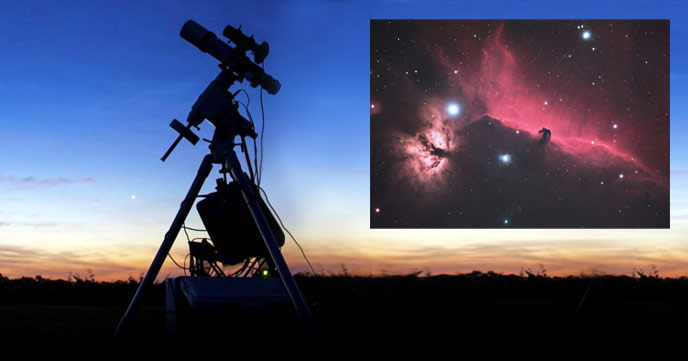
If you’re getting started in deep-sky astrophotography, I believe that a compact apochromatic (APO) refractor telescope is the best possible choice.
A compact APO refractor is portable and lightweight, making it a smoother transition from the camera lenses you may be used to. In fact, in many ways, a high-quality apochromat is very much like a telephoto lens.
If you’re interested in photographing nebulae and large galaxies in the night sky through a telescope, this article should shed some light on the decision-making process ahead of you.
My first refractor telescope for astrophotography. (Explore Scientific ED80).
Introduction
Throughout the past 8 years of deep-sky astrophotography, I’ve made lots of mistakes. In the beginning stages, I made critical errors in selecting and setting up equipment.
From the beginning, my goal was to capture deep-sky images of nebulae and galaxies. This type of astrophotography requires the most advanced equipment and demands a careful setup routine.
The type of telescope you choose early on can have a dramatic impact on the complexity of your deep-sky astrophotography setup. In my experience, a compact, wide-field refractor offers an improved user experience over the other telescope types during the acquisition stages of astrophotography.
For example, I began taking my first deep-space images with a reflector telescope. If I could go back and I do it all over again, I would have chosen a compact, wide-field refractor to start astrophotography with.
These days, I use a refractor telescope for 90% of my astrophotography.
I am not saying that there is anything wrong with starting your astrophotography journey with a Schmidt-Cassegrain Telescope (SCT) or Newtonian Reflector, but I believe you will have some additional challenges to overcome early on.
No matter what type of photography experience you have going in, deep-sky astrophotography through a telescope will have a number of challenges to overcome early on.
This includes understanding how to polar align an equatorial mount, how to focus your camera on a faint deep-sky object, and how to attach your camera to the telescope. two out of the three challenges become more difficult if you’re not using a wide-field refractor to start.
The statement above is not theoretical, I personally experienced these frustrating moments in my backyard years ago. I should have started with a compact refractor telescope.
A recent photo of NGC 7822 captured using a color camera and a 100mm refractor.
I Should Have Started with a Refractor
I often see newcomers to deep-sky astrophotography starting with a telescope that will make an already challenging hobby even more difficult. I went through this experience personally, and this is what happened.
My first astrophotography telescope was a Meade LXD55 6″ Schmidt-Newtonian. I purchased this reflector telescope from a local camera store second-hand, for a great price.
At the time, I had very little knowledge of telescope types, optical designs, or astronomy in general. I took the advice of the salesman at the store, and he assured me that “this telescope can be used for astrophotography”.
The telescope I started taking pictures of space with.
First off, he was right. It could certainly be used for astrophotography, and I even found astrophotography images online taken by others using this particular model.
The problem was, this type of telescope presented some pretty daunting challenges to overcome. My long-term love for astrophotography was at stake, as a poor experience could potentially sour me on this new adventure.
Thankfully, I kept a positive mindset throughout the process despite having limited knowledge (and limited funds).
This was my First Astrophotography Telescope
My first telescope for Astrophotography was NOT a refractor, and it presented some challenges.
I mounted the Meade LXD55 SN6 to a Celestron CG-5 (Advanced Series GT) computerized telescope mount. The GoTo tracking mount was my biggest investment in the hobby early on, and looking back the mount was performed surprisingly well.
A Schmidt-Newtonian is a promising instrument for astro-imagers. The corrector plate helps you collect images with less coma than a traditional reflector design.
Essentially it’s a catadioptric telescope that combines elements from both the Schmidt camera and the Newtonian reflector. A spherical primary mirror is combined with a Schmidt corrector plate to correct the image.
It looks capable enough in the picture, so what’s wrong with starting your astrophotography adventure with a Newtonian Reflector, Schmidt-Cassegrain, or a Ritchey–Chrétien?
Some would argue that there is nothing wrong with any of these choices, but here’s why it wasn’t a good fit for me:
It was Heavy and Difficult to Balance
It wasn’t a bad telescope, and I even managed to collect my first-ever deep-sky image with it. I really had no idea what I was doing at this point, and was absolutely thrilled to finally captured a tracked deep-sky object in the night sky.
The problem with this old Meade telescope was that it was not a great type of telescope to start with. Looking back, a compact refractor telescope would have made my life a lot easier at the time.
For starters, it was rather heavy and difficult to balance. It was at the maximum payload capacity of my equatorial mount (Celestron CG-5), and I even had to use some “custom” counterweights to achieve balance.
In the astrophotography world, you never want to have your telescope rig reach the weight limits of your telescope mount. This puts extra stress on the equatorial drive system and often results in poor tracking.
My first picture of M31 (Andromeda) using the Meade reflector telescope (July 2011).
It Had Too Much Magnification
In my opinion, the telescope had a little too much focal length as well. Extra magnification can be great for pulling in small targets, but it’s also more demanding on aspects such as pointing accuracy, tracking, and focus.
Prime-focus astrophotography involves attaching your camera directly to the focuser of the telescope, with no additional eyepieces or lenses between them. That means that the native focal length of the telescope decides the field-of-view (FOV) and scale of the objects you shoot.
The SC6 had a focal length of approximately 762mm, which could be considered to be a “mid-range” focal length. For comparison, my William Optics Zenithstar 73 refractor has a focal length of 430mm.
I really shouldn’t complain about the 762mm focal length (FL) of the 6″ Meade, some amateur astrophotographers start out with an 8″ SCT with a demanding 2000mm+ FL. (I think I would have given up!)
The Focuser was Loose and Difficult to Secure
As newcomers will tell you, achieving a tight focus on your deep-sky subject can be challenging early on (here are some tips). It’s hard enough to find the optimal focus distance without worrying about the focuser “slipping” out of position on its own.
Like a traditional Newtonian telescope, the focuser is placed near the front of the optical tube to collect light from the secondary mirror. This creates a challenging situation in terms of balance, especially when using a heavy, full-frame DSLR camera.
The weight of my camera would put stress on the objective end of the optical tube. Despite using the locking screw, the DSLR would eventually fall downwards into the focuser as the night progressed. I constantly had to re-adjust focus after 4-5 images.
In general, I find reflector telescopes to be more challenging to focus than a refractor, and that was certainly the case with this F/5 Schmidt-Newt.
Start with a Compact, Wide-field Refractor
I’m not saying that a refractor telescope is the only way to go, but I think you’ll find that the astrophotography community generally agrees with me on this one. To be more specific, an apochromatic refractor is best.
Refracting telescopes use lenses, not a mirror, to deliver crisp views through the eyepiece, and high contrast, well-corrected color images with your camera.
In late 2011, early 2012, I invested in an Explore Scientific ED80 Triplet APO refractor. The reason I call this an “investment” is that, not only did this telescope reward me with my best images to date, but the quality glass holds their value quite well.
Below, is an old photo of my 80mm refractor telescope on a Celestron CG-5 equatorial telescope mount. The difference between the images I was collecting with the Schmidt-Newt and the APO refractor was night and day.
The stars were small and well-corrected (all of the colors came to a focus at once), and I no longer dealt with coma, reflections, and dramatic vignetting.
My first refractor telescope was an Explore Scientific ED80.
Another advantage this telescope had was the field of view. Being a beginner, I had my heart set on capturing some of the most iconic deep-sky objects like the Orion Nebula, Andromeda Galaxy, and the Pleiades star cluster.
The focal length of this telescope (480mm) was a perfect fit for all of these targets. I didn’t need to worry about creating a mosaic to fit the entire object in the frame. Images like this were the reason I got into astrophotography in the first place.
Finding targets in the night sky became a lot easier thanks to the forgivingly wide field of view. Even if the pointing accuracy of my computerized equatorial telescope mount was off, I could usually find my intended deep-sky target within the field of view of my first slew.
See my list of recommended refractors for astrophotography.
The first summer (2012) with my Explore Scientific 80mm refractor telescope was an exciting one. I captured several amazing photos of deep-sky objects with my Canon EOS Rebel Xsi DSLR.
The most exhilarating photo came in July of 2012 when I attempted to photograph the Andromeda Galaxy with my 80mm refractor and stock Canon DSLR. The image was a monumental improvement over my attempt the previous summer. I was especially thrilled at the clarity of the image and natural star colors recorded.
My first successful image of the Andromeda Galaxy (July 2012).
The Perfect Astrophotography Telescope
A high-quality doublet or triplet apochromatic refractor is capable of producing sharp, flat, well-corrected images. Almost all types of telescopes are capable of impressive astrophotography images, but some make you work a lot harder for it.
For example, a Newtonian Reflector presents an advantageous light-gathering ability and an affordable price-per-aperture. However, Newtonians require regular collimation and adjustments to avoid coma and perform at their best.
An apochromatic refractor will perform much better in terms of photography than its less expensive achromat counterpart.
The objective lens (consisting of 2 or more pieces of glass) of an apochromatic refractor is designed to focus light to the same point, and correct chromatic aberration. As you can see in the diagram below, an apochromatic objective focuses different wavelengths of light closer to the same point than an achromat does.
“The strict definition of apochromatism is having three wavelengths of light focusing to the same point. This normally requires a third lens element in the objective. The normal configuration is a positive, low-dispersion crown, combined with two high-dispersion flints, one negative and one positive. The lenses can be cemented, air-spaced, or a combination thereof.” Starizona.
For a technical description of how a refractor telescope works, and the refractive index of certain mediums, check out this informative article.
Pros and Cons of a Compact APO Refractor Telescope
There are some pros and cons to using a compact refractor telescope for astrophotography, and here they are:
Pros:
- You can mount them to modest, entry-level equatorial mounts
- Refractors are compact and lightweight compared to other telescope designs
- The focusers are solid and easy to focus
- They offer a similar experience to a high-end telephoto camera lens
- The image quality potential for astrophotography is exceptional
- Refractors do not require regular collimation or optical adjustments
- They offer a forgiving, wide field-of-view
You can mount a small refractor on a portable tracking mount like the Sky-Watcher Star Adventurer.
Minus:
- They are the most expensive telescope type (price per aperture)
- They are not well-suited for high-magnification planetary imaging
- The apertures are often too small to observe faint deep sky objects
- Galaxies and smaller DSO’s need 1000mm+ for an up-close view
My favorite astrophotos of all time were taken using a refractor telescope. From my first experiences with the Explore Scientific ED80 to the massive Sky-Watcher Esprit 150 Super APO, refractors are my number one choice for astrophotography.
The image below shows a William Optics Zenithstar 73 refractor mounted to a modest Sky-Watcher HEQ5 GoTo telescope mount. My DSLR camera is attached to the focuser of the telescope for deep-sky imaging at 430mm.
This entire ensemble can be lifted up and moved around the yard at a moment’s notice, so I usually keep the entire imaging system ready to go in the garage.
A setup like this is also refreshingly easy to travel with. It does not take up very much space in my vehicle and can be reassembled quickly.
A portable deep-sky imaging setup with a 73mm refractor telescope.
This versatile and reliable rig does not come at the expense of performance either. A small setup like this is capable of producing incredible astrophotography images using a DSLR/Mirrorless camera or a dedicated astronomy camera.
The photo below shows the image captured using the telescope setup pictured above in my video titled “Taking a Picture of the Andromeda Galaxy“.
This image includes 67 x 120-second exposures using a Canon EOS 60Da.
My latest version of the Andromeda Galaxy using a DSLR and a small refractor telescope.
My Newtonian Reflector Collects Dust
In 2014, I decided to purchase an 8″ Newtonian Reflection, the Orion 8″ F/3.9 Astrograph Reflector. The idea was to add some light-gathering power and a little more focal length at an affordable price.
However, I had become used to the quick setup time of my 80mm refractor, and balancing the big optical tube on my Sky-Watcher HEQ5 mount was time-consuming.
Also, I had to regularly collimate the tube before each and every imaging session. Perhaps the telescope was perfectly collimated before I attached my camera, but I always had to make sure before spending a night collecting images.
I did manage to capture some impressive images with this setup, but surprisingly, the added aperture did not add the extra “punch” to my images I was looking for. In the end, this telescope was a lot more effort, for very little (if any) benefit to my astrophotography.
I do not use my 8″ Newtonian Reflector very much these days.
What Size and Brand Should You Buy?
I’ve used refractor telescopes with an aperture of 51mm, all the way up to 150mm. Smaller, compact APO’s are much more practical and affordable, yet do not sacrifice as much performance as you may think.
For example, the image of the Lagoon Nebula and Trifid Nebula region of Sagittarius was captured with a miniature (51mm aperture) William Optics RedCat APO and a DSLR camera. This quadruplet refractor weighs just 3.2 pounds and can fit in your carry-on bag.
Nebulae in Sagittarius using a William Optics RedCat 51 APO.
Nearly every telescope manufacturer builds refractor telescopes, and I’ve had the opportunity to try many of them. I’ve had wonderful experiences using apochromatic refractors from Explore Scientific, William Optics, Meade, and Sky-Watcher.
William Optics compact doublets are very popular and rather affordable considering the optics used in their designs. The Zenithstar 73 APO is one such example, and a telescope I have personally taken a lot of beautiful images with.
The Sky-Watcher Esprit line of refractors is a step up, with the Esprit 100 Super APO (Triplet) being my most used refractor of all time. These telescopes are expensive and quickly grow in price as aperture is added.
Setting up the Sky-Watcher Esprit 100 refractor telescope in the backyard.
When choosing a refractor telescope for astrophotography, ensure that it is an apochromatic optical design, not an achromat. Also, ensure that the optical tube includes a robust, 10-1 speed focuser that can lock into position when needed.
You’ll also need to confirm that the mounting hardware will allow you to mount the telescope to your equatorial mount, and add additional astrophotography accessories such as a guide scope and camera for autoguiding.
Make sure you invest in the appropriate field flattener for your refractor, as this extra glass lens will help flatten the field of view to the very edges of your picture.
Related Article: The Best Astrophotography Telescopes Available in 2023
Final Thoughts
If your astrophotography interests lie in taking images of nebulae and large galaxies, an apochromatic refractor should be your number one choice for a telescope.
This category of deep-sky objects includes some of the most iconic wonders in space, and you could spend a lifetime capturing them.
Not only is an APO refractor a perfect fit in terms of focal length (native magnification), but the images with your DSLR/Mirrorless or dedicated astronomy camera will be extremely sharp and well-corrected.
If you’re looking to photograph the planets, a compact refractor is not for you. Smaller targets such as planets and many galaxies are not a good fit for a wide-field refractor.
But if you’re a fan of quick set-up time, consistent results, and wide-field nebulae like the ones below, you simply cannot beat an APO refractor.
The Soul Nebula in Cassiopeia using a William Optics Zenithstar 73 APO.
The Soul Nebula in Cassiopeia using a William Optics RedCat 51 APO.
Recommended Refractors for Astrophotography
The following list of apochromatic refractor telescopes have all produced exceptional results for me personally, so I feel comfortable recommending them. They are all compact, wide-field instruments capable of producing images like the ones shared in this post.





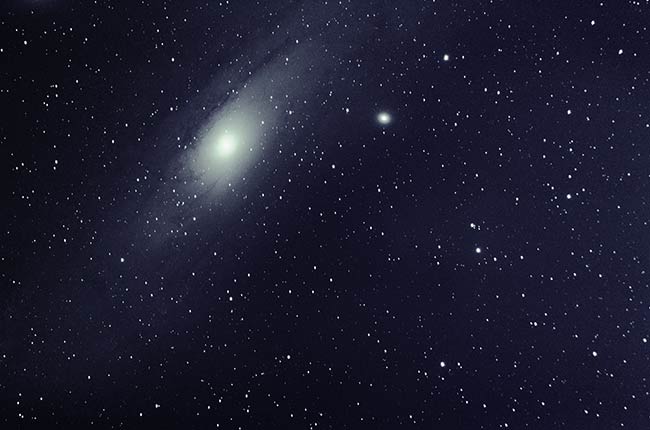



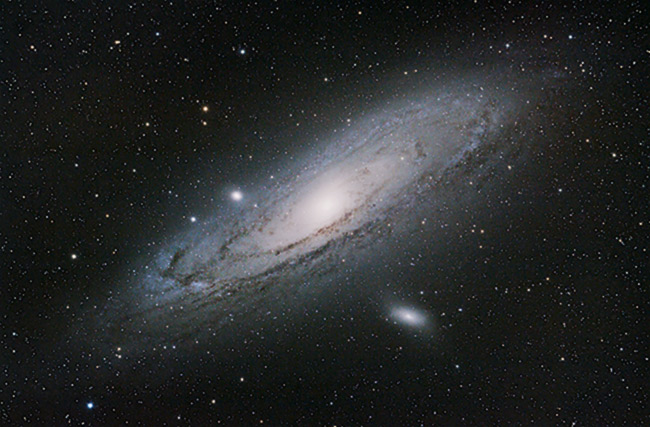


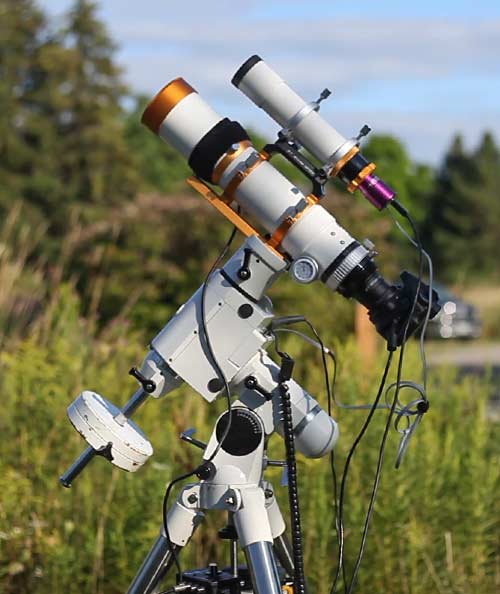


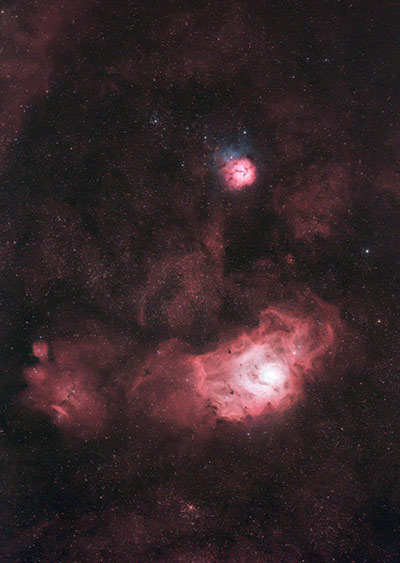

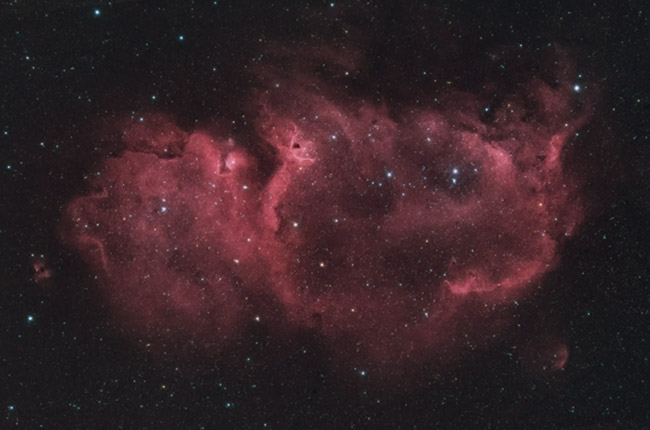

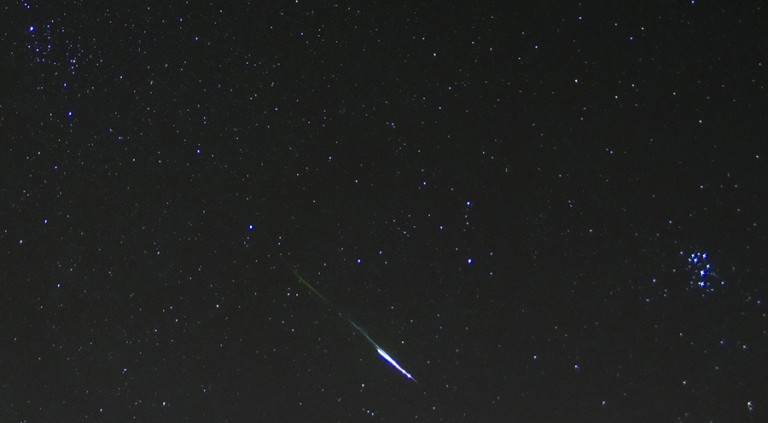

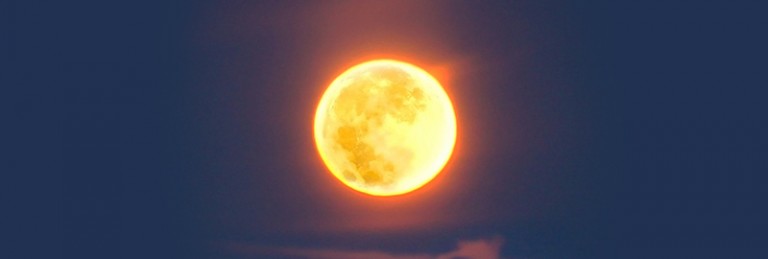

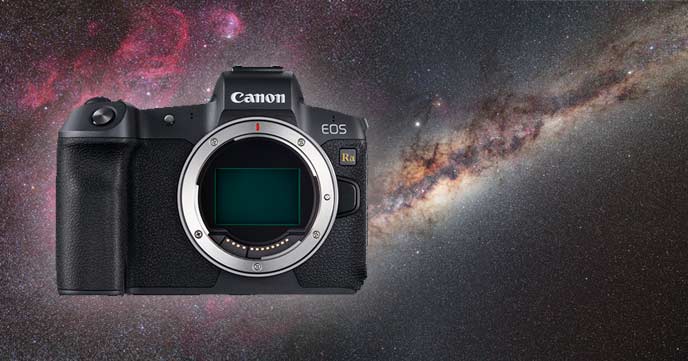
Hey Trevor, this was a nice article (as always) and very welcome at the moment. I started out 2 years ago with a Newtonian 8″ reflector (1000 mm focal length) and am a bit frustrated with the difficulty I am having, so it feels nice (I am sorry :D) that even you have experienced this early on. That is why I am currently looking to buy the William Optics Zenithstar 73. I was wondering if you have used the ASI ZWO294MC-Pro with this telescope and/or if you think that this is a good camera for this scope? The pixel scale is around 2.2 which is not in the ideal range, but I also want it to work well with the Newtonian if I decide to use it of course. Thanks, Jeffrey.
Hey Trevor, well written article as always. It is nice to read that even you have experienced similar difficulties in this hobby. I started out about two years ago with an 8″ Newtonian reflector (f=1000mm) and HEQ5-Pro, which is close to being maxed out if I use auto guiding gear. This is why I am looking to buy the William Optics Zenithstar 73 APO. I want to ask whether you have used the ZWO ASI294MC-Pro with this telescope and/or if you think the results can still be exceptional as the pixel scale is about 2.2. Thank you, Jeffrey.
I see that my earlier message needed some time to progress. Sorry about that :D.
Great question Jeffrey. Yes, I have used the Z73 with the 294MC Pro a number of times and it worked out just fine despite the pixel scale “rule”. I prefer to use a DSLR (especially a full-frame) with the 73 to maximize the FOV. This image: https://www.instagram.com/p/B4d2b9Illic/ was taken with much of the data coming from the 294 and Z73 🙂 All the best!
Thank you very much Trevor!
Great advice, similar story to my own. I have a 72mm WO apo & wouldn’t sell it for the world
Hi Trevor . Great advice. I just purchased a used 72mm astro tech doublet . Will be using with an un- modified canon 80D .
Can’t wait for some clear skies here in N.E. Pa.
Your videos and pics are extremely helpful !
…wondering if I should sell my Canon 400 prime for a small refractor. My current scope is an ED102. Thoughs?
Hi Trevor, Starting to worry now, having purchased a Skywatcher Mak 127, 1500fl as I already have a full sensor DSLR 20K ish pixels and it may have taken me down the wrong path. I am really very new to the world of astronomy.
Great post as always! I’m now sort of regretting my first scope purchase now! Haha
I currently have a 130pds with a Nikon d5000. Would you say I would get a bigger benefit from upgrading to a refractor rather than upgrading the camera to something like the asi1600?
Hi Trevor,
Thanks for all your informative articles. I have been reading up on this subject for nearly 12 months. I’m looking for a good first refractor. Currently I use a Canon 550D with Tamron zoom and HEQ5Pro.
I think one of the aspects missing from Astrophotography posts is a review of matched Refractor image circle size and camera sensor size. Some of the images I have seen on posts appear to show ZWO ASI294 with Esprit 100 which has a full frame image circle. Given the ASI294 camera has 4/3 sensor it would seem to me that a lot of light would be wasted falling outside the sensor footprint? Looking at the Esprit 80 that has a APS-C image circle, I would assume that the best camera for this would be (as an example) a ASI071 that has an APS-C sized sensor.
The matching of Refractor, Camera and the use of focal reducers and flatteners is a puzzle for me and there appears to be little info on this elsewhere.
Thanks again for your amazing and inspiring articles.
Hello Trevor,
Owning a 6″ Newtonian and a 71mm APO, I fully agree with your views.
BTW, the picture caption
“The Soul Nebula in Cassiopeia using a William Optics RedCat 51 APO.”
under the Pleiades Picture should read
“The Pleiades in Taurus using a William Optics RedCat 51 APO.”
Cheers
Robert
Nice article!! An interesting to me follow-up would be what the difference is between doublets, triplets etc.
Btw, I think I’ve spotted a tiny mistake. The pic “The Soul Nebula in Cassiopeia using a William Optics RedCat 51 APO.” is a photo of the Pleiades, isn’t it?
I have a 130pds newtonian reflector with a coma corrector, and am happy with it. It has a short focal length (650mm) and so is wide field. It is a lot cheaper than an apochromatic. There is an extra challenge with balancing a newtonian, as I have to rotate the telescope within the mounting rings. (I find it hard to explain why. If I have the telescope pointing at Polaris and I am behind the telescope looking at Polaris, I can’t have the weight of the camera, guide camera, etc. on the right side or on the left side of the telescope. )
So much of what is described tracks with my own experience as I start out. I’m at the point where I need to buy a second telescope, better suited to deep sky than my SCT. This article has convinced me to go for a refractor rather than the fast Newtonian I was considering. What surprises me though is that the most highly recommended Esprit is, I believe, not particularly fast, at f/7. My SCT can operate at this speed using a focal reducer but this seems to be demanding much longer exposures than ideal, especially when using pollution suppression filters. Has anyone got an explanation for how f/7 in a refractor turns out to work so well for deep sky imaging?
Thanks a lot,
Steve
Hi Trevor,
I just recently started following you and I really appreciate your videos on youtube and posts here on your site. You have really taught me a lot! I am actually passionate about both deep space astrophotography, and I also enjoy planetary viewing and photos. I am searching for a great scope to do a bit of both – without having to purchase two separate scopes for a ton of money. I also have no choice but to have an easily portable setup due to living in the city. I have been eyeing the Meade LX85 bundle but it is currently backordered. It would be great if I could have your opinion as to whether this would be a good fit or if you recommend something else.
https://optcorp.com/collections/goto-computerized-telescopes/products/meade-lx85-115mm-f-7-triplet-apo-refractor
Thank you,
Derek
Do you have any experience (or know anyone) with Lunt refractors? I’ve been thinking of switching from an 8″ sct to refractor after reading your postings and it seems like they offer some very good looking 102mm APO refractors for the price
Question on Refractors:
Are refractors like Barlows in the way the more powerful the barlow the less light you get
Dose a doublet allow more light then a triplet for a quad?
Thanks,
Drew
Hi Trevor,
If I plan to shoot HAlpha, O3, etc, independently, using a monochrome camera, a low cost achromatic refractor should perform just as well as an expensive APO. The cost saving is really significant.
How come this fact is not mentioned more often? Is my logic wrong somewhere?
Thanks !
Fabio
I disagree. Refractors come with their own set of issues including CA (even in triplets), astigmatism, vignetting, field curvature, front-loaded balance offset, higher aperture price, among others. Attaching a camera and polar alignment are the same process between refractors and reflectors.
A small 80ED is primarily dedicated to bright DSOs, whereas a small to medium aperture refractor can resolve dark nebula with less exposure time.
I generally dislike product promotion, but the EdgeHD line is a superb introductory AP scope, especially the 8″ and 9.25″ variants. The focal ratio can be stepped down to F/7 or F/2 with different optical adapters, giving these scopes a bit of longevity as one’s AP skills improve.
The 8″ is about $200 more than the ES 80ED.
There are issues with reflectors and the EdgeHD line is no stranger to these. Bob’s knobs are a must and collimation is typically tweaked every imaging night. The corrector plate needs to be cleaned regularly. Keeping dew off the corrector plate can be a challenge. And you’ll need a moderately beefy mount, even for the 8″… But if anybody is seriously getting into AP, then a sizeable portion of their budget should be going into the mount anyways.
While refractors *are* a good choice, they are not the only best choice for beginners.
Great points here, Brian. Thank you for weighing in!
Hi, interesting article as always !
However I do not share completely your views! I think that most of your lukewarm experiences with reflectors were due to the fact that you compared cheap entry-level Newtonian telescopes to rather expensive apo refractors (inch per inch). For instance, focusing issues with the Meade SN were due to the poor quality of the focuser, and not to the telescope type. Your collimation problems and disappointing results with the Orion reflector are likely due to poor mechanics and average optics rather than an inherent inferiority of reflecting telescopes.
I completely agree that apo refractors are great for beginners and for short focal length astrophotography, however as soon as you reach 800mm f.l. and above, reflectors become more suitable in my opinion as refractors become very costly and heavy, while being usually much slower. Your Esprit 150ED weights much more than my carbon 200/800 newtonian astrograph, and the OTA is longer as well. Regarding balance, the best practice with newtonian is to line up the focuser with the counterweight shaft (camera pointing towards the counterweights), so I don’t see it as a serious issue.
I’m a disabled Navy vet with both degenerative disc disease and Parkinson’s Disease. I have some ASTRO experience with alt/alz c5s and c8s. Don’t have much time left . Please recommend a setup that’ll produce results without alot of fuss.
Thanks,
Vic
Hi Trevor, love your work!!
I am looking to buy my first telescope and like everything I read about Triplet APOs… is the Esprit 120 a good enough scope to be used for just visual observing? I’m trying to buy only one scope that does it all. At the moment I’m looking through a pair of 10×50 binoculars and I am wondering if the Esprit would provide the same quality of view. I do really enjoy a “perfect” view!
Hi Trevor,
This was a great article for someone at my level who has done basic astrophotography for 2 years with an unmodified mirrorless Nikon Z and Star Adventurer Pro tracker. I’ve done a lot of Andromeda, Pleiades, and Milky Way and want to capture other objects now. My question is, did you use an unmodified camera or modified DSLR in your photos on the refractors and would it make sense to get a CCD camera instead of spending the dollars on modifying my camera?
Hi Trevor,
This article was such a relief to read. I started out with an 8 inch Newtonian and have made ever mistake possible. There were too many variables and an awkwardly placed eye piece to figure it all out fast. I just got a short refractor that I can’t wait to try. I am glad that I am not alone in the struggle. Great article!
What is so funny about your article is that I chose the same telescope initially for AP and moved to the same refractor as well, the ES ED80. Like you, I am hooked on the quality of images that I get from a refractor.
I’ve still got the SN6 wondering what to do with it, so I might sell it.
At the end of the day everyone will buy what they will and we may not reach them with our experiences. I’ve run into that along the road so far too, so to each his own. Everyone has to learn, either by instruction or by experience.
Hi Trevor. Great article and exactly what I needed to know.
I started out just using my camera and telephoto lens on a tripod and wanted something more. So I went to a local telescope store and was advised to buy a C8-N which is a beast!
I’ve been very frustrated with it ever since I bought it.
I’d like to know if your telescope recommendations have changed since you wrote the article in 2019?
I will probably keep my Advanced VX mount ad continue to use my unmodified Canon 70D.
I’m definately going to purchase an apochromatic refractor. Do you have any other suggestions?